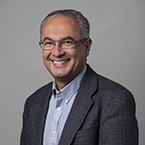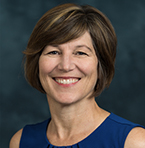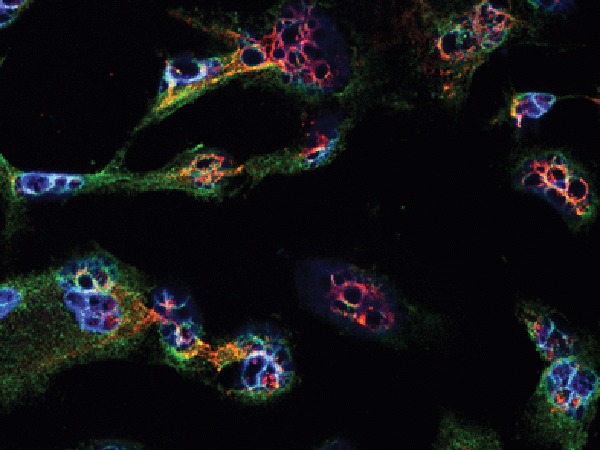Upcoming AACR Virtual Meeting on Sarcomas Spotlights Early-career Researchers
Most scientists, regardless of field or career stage, have faced difficulties networking and disseminating their research in the past year, with many conferences and symposia canceled. The popularization of virtual meetings has helped researchers overcome this hurdle and keep in touch with their peers. However, early-career researchers—who count on these opportunities to form new collaborations and recruit graduate students and postdoctoral fellows—have suffered particularly hard.

“Young researchers trying to launch their careers have traditionally depended on presenting at meetings and meeting people at poster sessions or over a beer,” said Alejandro Sweet-Cordero, MD, co-chair of the upcoming AACR Virtual Special Conference on Sarcomas, to be held June 28-29. Sweet-Cordero is professor of pediatrics, director of molecular oncology, and co-leader of the pediatric malignancies program at the University of California San Francisco.
The ability to interact is especially important for researchers of rare diseases, stresses another co-chair of the conference, Elizabeth Lawlor, MD, PhD. For a disease like sarcoma—which comprises about 1 percent of all adult cancers and 15 percent of all pediatric cancers—conferences like this are crucial, said Lawlor, who is co-center director for basic and translational science and associate director of cancer biology at Seattle Children’s Hospital, and professor of pediatrics at the University of Washington.

Broadly defined as tumors of the bone or connective tissue, sarcomas can arise from a variety of organ types—such as cartilage, muscles, tendons, and fatty tissue—making each of over 70 distinct sarcoma subtypes even more rare.
“Because these are orphan diseases and the research community is relatively small, it’s really important to get together across national and international boundaries,” Lawlor said. “No one academic center is going to move the needle on sarcoma research by themselves.”
For these reasons, Lawlor and Sweet-Cordero, along with Poul Sorensen, MD, PhD, professor of pathology at the University of British Columbia, designed the conference around two key goals: giving young investigators a platform to present their research and fostering international collaborations among sarcoma researchers from a variety of disease types and disciplines. We talked with Sweet-Cordero and Lawlor about what to watch for at the conference, as well as what’s new in the field of sarcoma research.
What are the scope and overall themes of the upcoming conference?
Lawlor: We centered this around the future of clinical research and care for sarcomas—broadly, so we’re not limited to a single type of sarcoma or a single age group of patients. We’re really focused on how to understand the fundamental biology and how we can translate that to better outcomes for patients. But the theme is also reflected in our emphasis on early-stage investigators, who are future leaders in the field. Through their research in cutting-edge science in genetics, genomics, immunotherapy, signaling, and new model systems, they are poised to move the needle on sarcoma research, so we wanted to feature them.
Sweet-Cordero: The scope is very broad—it’s covering all sarcomas. We tried to make sure we had representation from a broad range of diseases and research areas, but another key thing about this meeting is that we’re using it as an opportunity to highlight junior investigators. We didn’t invite the typical very senior people to speak. This last year has been particularly challenging for young investigators who are trying to launch their careers and we wanted to give them an opportunity to highlight their work.
What are some of the most interesting topics being covered at the conference?
Lawlor: I’m most excited about applying state-of-the-art technologies to new models that are more faithful to rare diseases such as sarcomas. The biology and the potential therapeutic targets that we uncover with these models are likely to be relevant to patients who have the diseases. We now have really sophisticated genetically engineered models of zebrafish and mice, but also human organoid systems. I think putting all those models together is how we’re going to learn what’s relevant to patients.
Sweet-Cordero: There’s a lot of interest right now in using the immune system to target cancer, so that’s something that will be very strongly highlighted. It’s also very important to develop new models to study sarcoma. One of the things that’s challenging about these rare cancers is that you can’t do a lot of clinical trials. Using models like genetically engineered mice and organoids is especially important in sarcomas, so we’re highlighting that. We’ve also made a lot of progress in understanding how cancer cells communicate through both external and internal signaling, so we have a series of talks on that as well. Because a lot of these diseases are driven by gene fusions involving transcription factors, there’s also a strong interest in understanding how sarcomas reprogram gene expression through epigenetic regulation. I’m really excited about the whole meeting.
What are some of the biggest gaps in the field of sarcoma research, and how is the conference designed to address those?
Lawlor: One big gap is disease models, which is why we have a whole session on it. While a lot of tumor types have genetically engineered mouse models that allow powerhouse studies to be done, many sarcomas don’t lend themselves to be modeled in mice for a variety of reasons, so we don’t have good mouse models. Tissue access is also a major gap. These are rare tumors, so getting enough tissue to interrogate the disease in thousands of patients, especially at different stages of disease, is impossible.
Sweet-Cordero: One of the major issues in sarcomas is that we don’t have a lot of therapies that are specifically designed to target the drivers of the disease. We don’t have specific drugs for most of the gene fusions, which is a difficult challenge. I think the session on cell signaling will look at the mechanisms of how these fusions activate downstream pathways. Hopefully there will be some exciting new work there that will begin to point us to new therapeutic strategies. There’s also a lot of interest and excitement about using CAR-T cells and checkpoint inhibitors to activate the immune system in sarcomas. We’ll be highlighting some great work in that area, so I think everyone’s looking forward to that.
Tell me a bit about your own sarcoma research.
Lawlor: My research is focused on Ewing sarcoma, which is driven by EWS-ETS fusions, most commonly EWS-FLI1. The biology of these fusions has really illuminated the concept that epigenomic and transcriptional rewiring, which is seen in many cancers, can be driven by a single genetic lesion. My lab studies how the fusion protein cooperates with developmental gene programs to promote treatment resistance and disease progression. Subpopulations of cells within and around the tumor have different functions, and even though the tumor cells all have the have the same genotype, subpopulations can have very different phenotypes. These phenotypes are largely generated by acquisition of different transcriptional circuitries, circuitries that are heavily influenced by the local environment. We think this phenotypic plasticity of tumor cells is critical to clinical heterogeneity. For example, Ewing sarcomas that metastasize to bone have a much worse prognosis than those that metastasize only to the lung. We’re very interested in the factors in the bone microenvironment that confer cell plasticity and the potential for relapse and resistance to current therapies.
Sweet-Cordero: I’m a physician-scientist, trained as a pediatric oncologist, so I’m interested in advancing our understanding of pediatric sarcomas. I’m primarily interested in osteosarcoma and Ewing sarcoma, which are the two most common bone cancers. Clinically, they have a similar presentation, but biologically, they’re quite different. Ewing sarcomas are typically driven by EWS gene fusions, but the genome is otherwise stable. Osteosarcoma is the opposite extreme, with a highly complex genome and extensive genomic instability. We do a lot of genome sequencing and RNA sequencing to understand the evolution of these tumors, and especially the process of metastatic progression. Oftentimes what kills these patients isn’t the primary cancer, but the metastasis, so we want to understand what enables tumors to leave their native environment. We’re really focused on developing models to study this process.
How might a better understanding of sarcoma genetics and molecular drivers lead to improved treatment options for patients?
Lawlor: There’s a whole area of science that is emerging where sarcomas are leading the field, and that’s in understanding how the epigenome can be hijacked by tumor-initiating mutations. Sarcomas are poster children for that. The gene fusions or point mutations lead to epigenetic reprogramming, particularly of enhancer landscapes, resulting in transcriptional addiction. The fundamental discoveries of these concepts are happening in sarcoma models, and now that information is being utilized to study other types of cancer.
Sweet-Cordero: Although we tend to think of each sarcoma as being homogeneous, we know that almost every patient has a unique constellation of mutations that drive the cancer. That’s especially true in osteosarcoma, but even in Ewing sarcoma, there are different mechanisms of fusion formation. Some are the consequences of big chromothriptic events that lead to complex looping structures in DNA, while others are more typical chromosomal breaks. Understanding what’s happening can have important implications for prognosis. Also, a fairly high fraction of sarcomas have genetic predispositions that are only evident when you do germline whole-genome sequencing. That can be very important, not only for the patient but for the patient’s family.
What is the target audience of this conference?
Lawlor: I think it will be of interest to everyone. The speakers are more basic translational scientists, but many of them are physician-scientists, so they are very aware of the need for clinical research and what it takes to get something from the lab into the clinic. What’s presented at this meeting isn’t ready for clinical trials now, but clinical investigators at this meeting will see where the future is going to take us in terms of targeted therapies. We were very intentional about diversity across many spectrums in this meeting. We have PhDs, MDs, MD/PhDs, surgeons, oncologists, equal numbers of men and women, and speakers from all across the U.S. and Europe. These are diseases that take an international, diverse perspective, and we wanted to celebrate and acknowledge that.
Sweet-Cordero: It’s more focused on basic or translational scientists, but it will hopefully also attract people who care for the patients in the clinic and are curious about the underlying biology. We’ve tried to have broad representation among the speakers, and a fair number are physician-scientists. But we really want to welcome everyone. Whether you’re in the sarcoma field or not, I would encourage you to come to this meeting, support your junior colleagues, and try to help us rebuild our community after this very challenging year.



